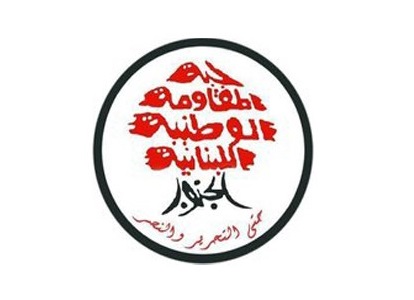|
January 1986 Lebanese Forces Coup
On January 15, 1986, forces loyal to Lebanese president Amine Gemayel and Samir Geagea, intelligence chief of the Lebanese Forces (LF), ousted Elie Hobeika from his position as leader of the LF and replaced him with Geagea. The coup came in response to Hobeika's signing of the Syrian-sponsored Tripartite Accord that aimed to put an end to the Lebanese Civil War. Background The tussle between Samir Geagea and Elie Hobeika for control over the Lebanese Forces (LF) had started as early as March 1985. That same month, Samir Geagea gained control over the LF after defeating the last leader of the Phalangist militia, Fouad Abou Nader. In May of that same year, however, Elie Hobeika was appointed to lead that unit. In December 1985, Hobeika signed in the name of the LF an agreement with the Syrian government, the Druze Progressive Socialist Party (PSP) led by Walid Jumblatt, and the Shia Muslim Amal Movement headed by Nabih Berri, which became known as the Tripartite Accord. One of t ... [...More Info...] [...Related Items...] OR: [Wikipedia] [Google] [Baidu] |
Lebanese Civil War
The Lebanese Civil War ( ) was a multifaceted armed conflict that took place from 1975 to 1990. It resulted in an estimated 150,000 fatalities and led to the exodus of almost one million people from Lebanon. The religious diversity of the Lebanese people played a notable role in the lead-up to and during the conflict: Lebanese Christians and Lebanese Sunni Muslims comprised the majority in the coastal cities; Lebanese Shia Muslims were primarily based throughout southern Lebanon and in the Beqaa Valley in the east; and Lebanese Druze, Druze and Christians populated the country's mountainous areas. At the time, the Lebanese government was under the influence of elites within the Maronite Christian community. The link between politics and religion was reinforced under the Greater Lebanon, French Mandate from 1920 to 1943, and the country's parliamentary structure favoured a leading position for Lebanese Christians, who constituted the majority of the population. However, Leban ... [...More Info...] [...Related Items...] OR: [Wikipedia] [Google] [Baidu] |
Lebanese Resistance Regiments
The Lebanese Resistance Regiments (, or AMAL), also designated Lebanese Resistance Battalions, Lebanese Resistance Detachments, Lebanese Resistance Legions and Battalions de la Resistance Libanaise (BRL), but simply known by its Arabic acronym ʾAmal which means "Hope", were the military wing of the Amal Movement, a political organization representing the Muslim Shia community of Lebanon. The movement's political wing was officially founded in February 1973 from a previous organization bearing the same name and its military wing was formed in January 1975. The Amal militia was a major player in the Lebanese Civil War from 1975 to 1991. The militia has now been disarmed, though the movement itself, now known as the Amal Movement (Arabic: ''Harakat Amal''), is a notable Shia political party in Lebanon alongside Hezbollah. Creation The Amal militia was founded in 1975 as the militant wing of the Movement of the Disinherited, a Shi'a political movement founded by Musa al-Sadr a ... [...More Info...] [...Related Items...] OR: [Wikipedia] [Google] [Baidu] |
Lebanese Forces – Executive Command
The Lebanese Forces – Executive Command or LFEC (Arabic: القوات اللبنانية - القيادة التنفيذية , ''Al-Quwwat al-Lubnaniyya – Al-Qiyada Al-Tanfeethiyya''), was a splinter group from the Lebanese Forces (militia), Lebanese Forces led by Elie Hobeika, based at the town of Zahlé in the Beqaa valley during the late 1980s. It was initially founded in January 1986 under the title Lebanese Forces – Uprising or LFU (Arabic: القوات اللبنانية - الانتفاضة , ''Al-Quwwat al-Lubnaniyya – Intifada''), but later changed its designation. Origins The LFU was formed by Hobeika at Zahlé out of his LF supporters, who sought refuge in the Syrian-controlled Beqaa Governorate, Beqaa after January 1986 Lebanese Forces coup, being ousted from east Beirut in January 1986 by the Lebanese Forces (militia), Lebanese Forces' faction led by Samir Geagea. Renamed Lebanese Forces – Executive Command later that year and financed by Syria, Hobeika ... [...More Info...] [...Related Items...] OR: [Wikipedia] [Google] [Baidu] |


